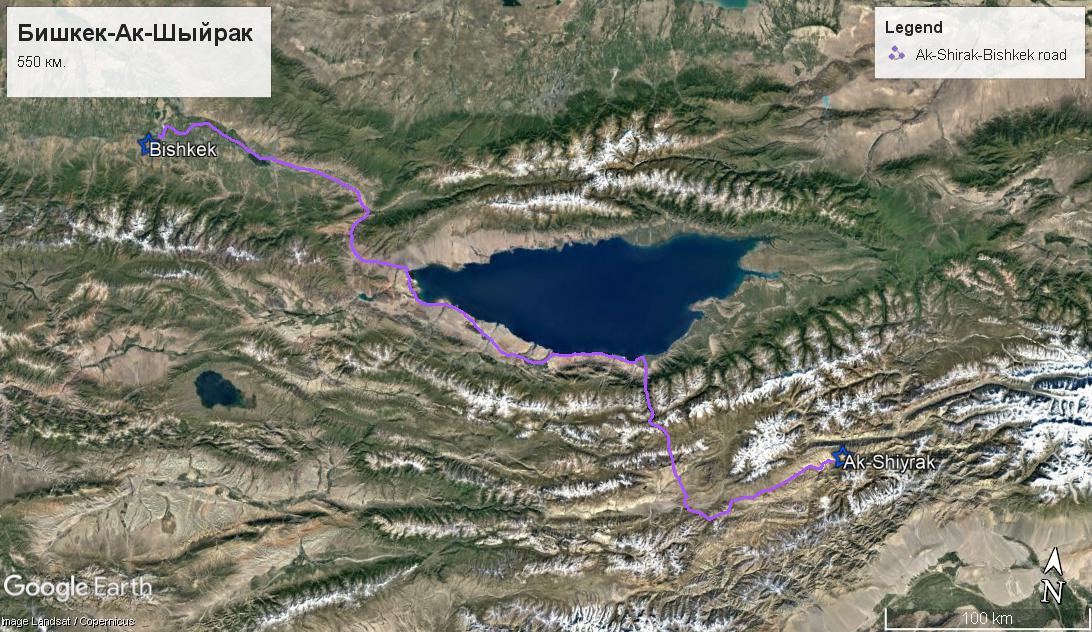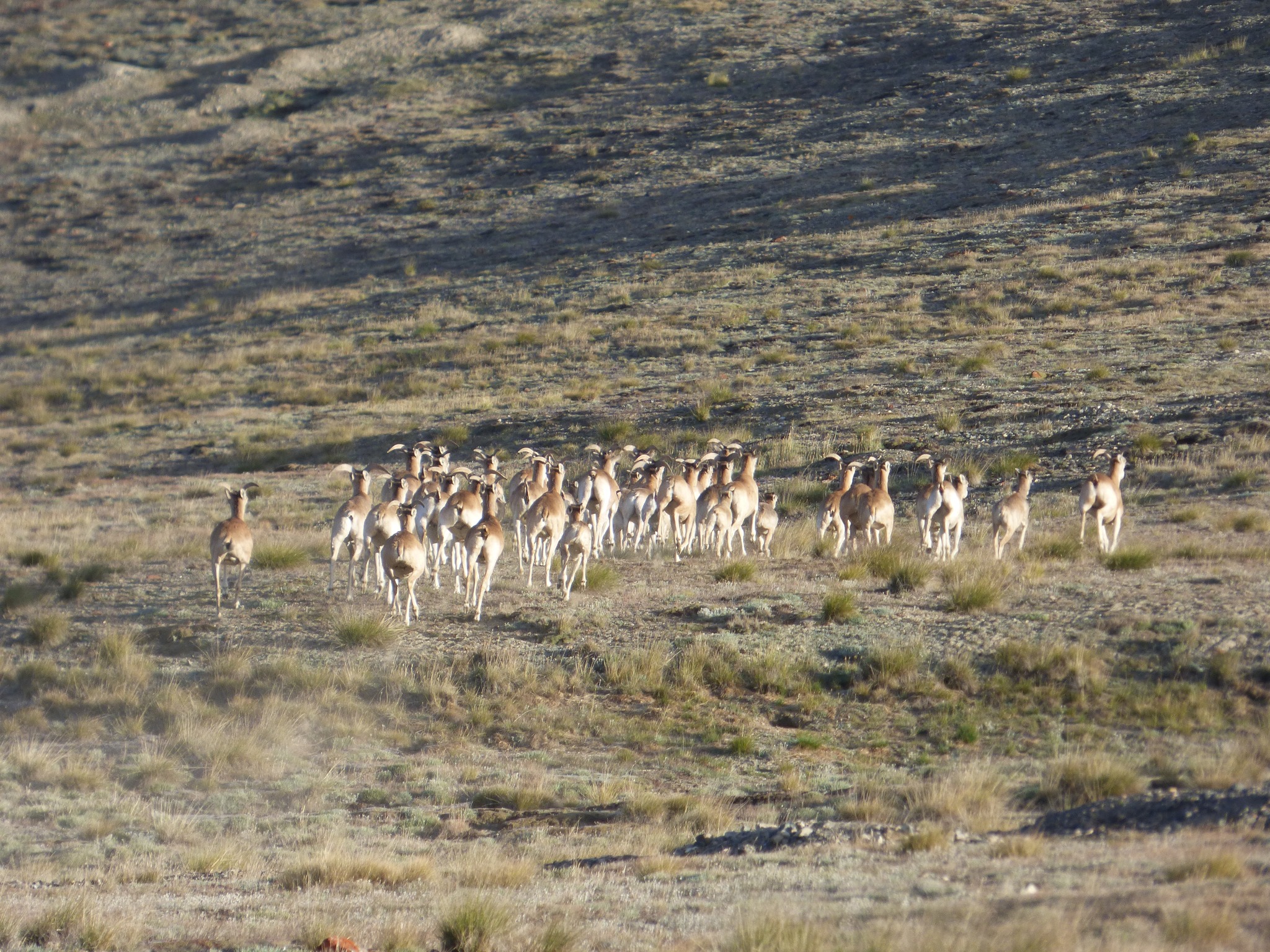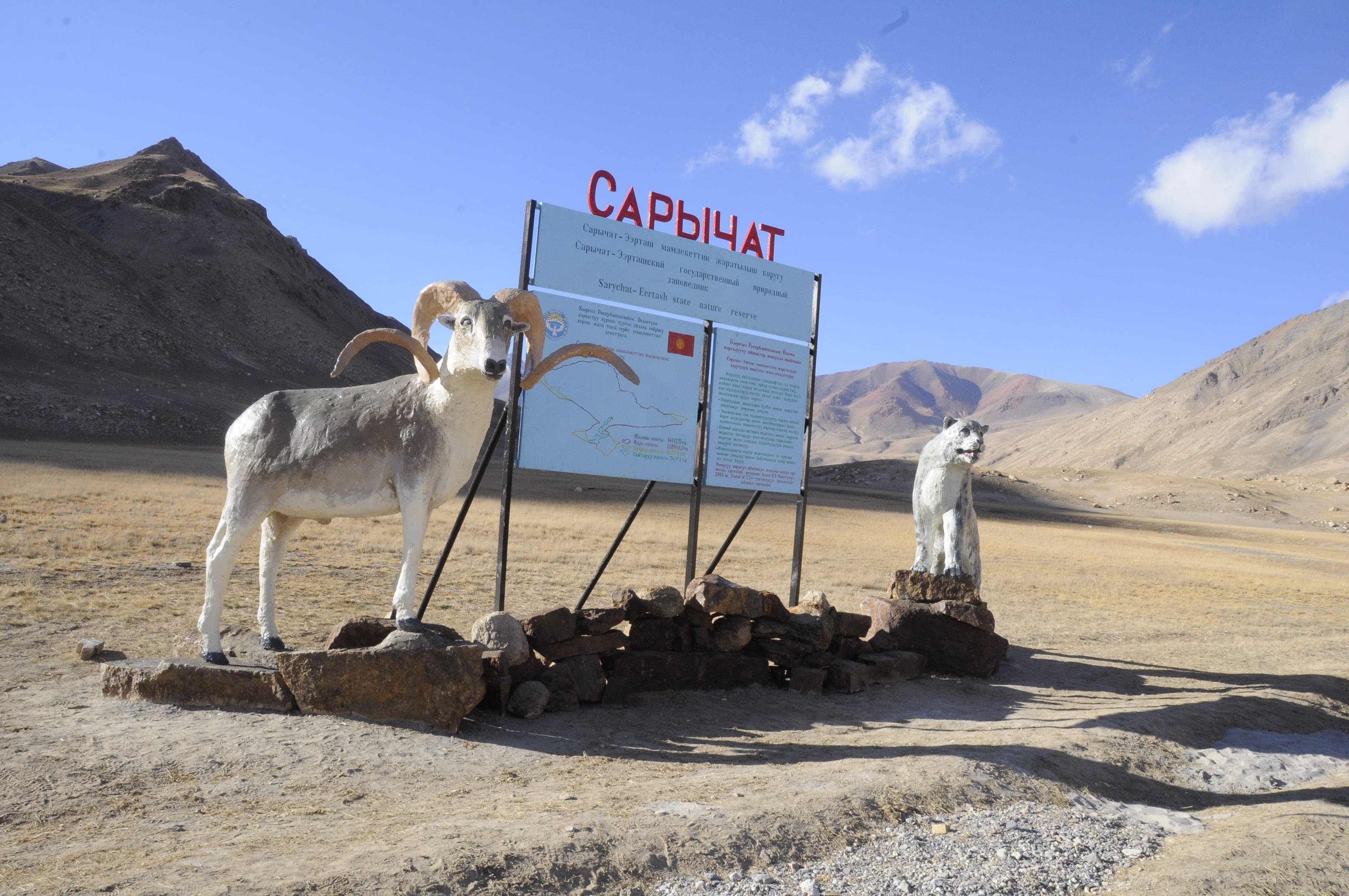Ak-Shyirak village is located in the highlands of the Central Tien Shan at an altitude of about 3000 m.a.s.l. The main income for the local population is cattle breeding. Unfortunately, the conflict between man and wild predators is increasing every year. In order to conserve biodiversity, we create projects to support the local population by increasing their income, raising awareness of wildlife and creating conservation mechanisms based on environmental agreements.
The local communities of Ak-Shyirak (Jety-Oguz district) and Enilchek (Ak-Suu district) have created local protected natural areas (200 and 78 sq. km) adjacent to the Sarychat-Eertash reserve and have been protecting them for more than ten years. The Snow Leopard Enterprises (hereinafter SLE) program launched by the Snow Leopard Trust (hereinafter SLT) in these villages in 2003 supports local communities and motivates them to protect the local natural area, increasing the income of both local families and communities. During the implementation of the program, local protected areas have become better protected and, according to local residents, the number of wild animals in these places has increased.
To date, we have achieved that the local protected area can already bring material benefits to the local population through the development of ecotourism. The increase in income from ecotourism will allow some families to move from pastoralism to another direction, reducing the number of livestock. Tolerance of the population to the attacks of wild predators will increase.
As part of the GEF SGP, SLF is implementing a project to develop the first eco-tours to observe snow leopards. One of the key steps of the project is to increase the capacity of the local community of Ak-Shyirak village. To date, dozens of trainings have been conducted. We have trained local guides/rangers in spotting snow leopards (spotter), maintaining optics, installing camera traps, providing first aid, sanitary standards, serving tourists in natural conditions, ensuring the safety of visitors in mountainous conditions, norms of behavior in protected areas, women in creating guest houses (homestays) and hosting, equestrians, cooks, as well as the local community took an intensive course in English.
We believe that building the capacity of local communities through ecotourism training and piloting snow leopard tours has great potential to improve the income of local communities and increase interest in local biodiversity conservation. Since the local protected areas are adjacent to the Sarychat-Eertash nature reserve, the nature reserve will also benefit financially from the program.
The villages of Ak-Shyirak and Enilchek, located on the territory of the Central Tien Shan of the Issyk-Kul region, were founded during the Soviet intensive development of the highlands of Kyrgyzstan as base camps for geological groups. Later, geological settlements were built here and they flourished until the collapse of the USSR. The main part of the population of the geological towns left these places in the early 90s of the last century and the geological settlements were inhabited by the local population. For the next 20 years, these settlements did not have the status of local ayil okmotu. At present, the main part of the local population of these people is engaged in cattle breeding. The number of resident population is growing and today 548 people are registered in Ak-Shyirak, and 171 people in Enilchek.
Due to their proximity to the borders with the PRC, visiting these areas requires obtaining permission from the border service. In winter, visiting these highlands becomes difficult because of the snow. Hunting for trophy mountain ungulates attracts a considerable number of seasonal foreign hunters to these areas.
Sarychat-Eertash Reserve has the highest population density of snow leopard (2 individuals per 100 sq. km) and mountain ungulates in the world (2400 argali and 2500 ibex per 1400 sq. km). Individual plots of snow leopards often reach 1000 square meters. km. Thus, the area around such a dense focus also has a high predator population and is of great conservation interest.
Ak-Shyirak village is located in the highlands of the Central Tien Shan at an altitude of about 3000 m.a.s.l. in the Jeti-Oguz district of the Issyk-Kul region of Kyrgyzstan.
Country Kyrgyzstan
Issyk-Kul region
Rural area Jeti-Oguz
Ak-Shyirak Aiyl Okrug
Center height 3600 m
Timezone UTC+6:00
Population 548 (2009)
Flora:
On the territory of Ak-Shyirak and the Sarychat-Eertash Reserve, there is a community of rose-flowered wormwood (Artemisia rhodantha) with cereal grasses: sessile-flowered ptilagrostis (Ptilagrostis subsessiliflora), furrowed fescue (Festuca sulcata), forbs - silky wormwood (Androsace sericea), (Oxytropis globiflora), Paulsen's snakehead (Dracocephalum paulsenii). The formation of Krylov's fescue (Festuca kryloviana) with purple ptilagrostis (Ptilagrostis purpurea) and sessile flower (Ptilagrostis subsessiliflora), Litvinov's bluegrass (Poa litvinoviana) and low kobresia (Kobresia humilis) is widespread. Kobreznevniks consist of hair-like sedge (Kobresia capiliformis), silver-leaved saussurea (Saussurea leucophylla), spherical sedge (Oxytropis globiflora), narrow-fruited sedge (Carex stenocarpa), and low kobresia (Kobresia humilis). The formation of the four-stamen dryad flower (Dryadanthe tetrandra) forms cushions, between which sedges, Tien Shan reed grass (Calamagrostis tianschanica), silver Saussurea (Saussurea leucophylla) and others grow.
Fauna:
Mammals
26 species of mammals inhabit the territory of Ak-Shyirak and the Sarychat-Eertash Reserve: snow leopard (Panthera uncia), manul (Otocolobus manul), wolf (Canis lupus), fox (Vulpes vulpes), brown bear (Ursus arctos), stone marten ( Martes foina), saltwort (Mustela altaica), weasel (Mustela nivalis), stoat (Mustela erminea), steppe polecat (Mustela eversmanni), mountain goat, ibex (Capra ibex (sibirica), mountain sheep, argali (Ovis ammon), gray marmot (Marmota baibacina), wild boar (Sus scrofa), Tien Shan mouse (Sicista tianschanica), gray hamster (Cricetulus migratorius), silver vole (Alticola argentatus (roylei), Kirghiz vole (Microtus kirgisorum), narrow-skulled vole (Microtus gregalis), hare sandstone (Lepus capensis), big-eared pika (Ochotona roylei) and others.
Species included in the Red Book of the Kyrgyz Republic: snow leopard, brown bear, manul, stone marten and argali.
Birds
On the territory of Ak-Shyirak and the Sarychat-Eertash Reserve, 92 species of birds have been recorded, including 31 species of permanent residents and 61 species of temporary or migratory species. The group of birds of prey includes the golden eagle (Aquila chrysaetos), the bearded vulture (Gypaetus barbatus), the Himalayan vulture (Gyps himalayensis), the Eurasian vulture (Gyps fulvus), the black vulture (Aegypius monachus) and the saker falcon (Falco cherrug). Birds of the partridge family found within the Reserve include the Himalayan turkey or snowcock (Tetraogallus himalayensis), rock partridge or partridge (Alectoris chukar) and Dahurian chile partridge (Perdix dauuricae). Ogar (Tadorna ferruginea) and Mongolian plover (Charadrius mongolus) live in mountain lakes. Typical passerine species include the chough (Pyrrhocorax pyrrhocorax), alpine jackdaw (Pyrrhocorax graculus), horned lark (Eremophila alpestris), pearl finches (Leucosticte brandti), Himalayan finches (Leucosticte nemoricola) and red-winged wallcreeper (Tichodroma muraria) among other species. 8 Red Book species inhabit the territory of the Reserve: golden eagle (Aquila chrysaetos), bearded vulture (lamb vulture) (Gypaetus barbatus), Himalayan vulture (kumai, snow vulture) (Gyps himalayensis), Eurasian vulture (Gyps fulvus), black vulture (Aegypius monachus), saker falcon (Falco cherrug), common eagle owl (Bubo bubo) and sickle beak (Ibidorhyncha struthersii).
Near the Ak-Shyirak village, the Ak-Shyirak river goes into narrow, steep canyons, where you can watch the Himalayan vulture colony.
In the area there are geological adits about 3-4 km long.
On the way to Ak-Shyirak village you can see Ak-Shyirak and Tastar glaciers.
You can find ancient petroglyphs.
Above Ak-Shyirak there is a gallery of stones that have been carved by the sun and wind for centuries.
How to visit Ak-Shyirak?
Get a border pass
Book a taxi
Book a guest house
Select tour program
Necessary steps to obtain a border pass.
1) Compile and submit a letter to the DRN ACS at the ICR KR (PSC building at the intersection of Zhibek-Zholu and Ibraimov streets, 3rd floor)
The letter can be written on behalf of the applying organization
The letter can be written on behalf of a private person
Travel agencies make passes for customers for a fee
The letter must contain information about the person, the purpose and timing of the visit to Ak-Shyirak, passport data, you must attach a copy of the passport in 3 copies. The application is considered approximately 5 working days. After obtaining approval with the seal of the authority, 2 copies of the letter with the original must be submitted to the State Border Service (the checkpoint of the border service is located 200 meters northwest of the main building of the Kyrgyz Agrarian Academy). A border permit for citizens of the Kyrgyz Republic costs 60 soms, for foreign tourists - 270 soms.
2) How to find a taxi or a car for a trip to Ak-Shyirak?
You can negotiate with Ak-Shyirak drivers
Mobile numbers of local drivers Omurbek 0700513403, Mirbek 0501669999, Ulan 0507282880.
In Ak-Shyirak, it catches the signal of the cellular operator NurTelecom (O). The cost of a taxi ride on the route Barskon-Ak-Shyirak-Barskon starts from about 13,000 soms per car.
The locals have an Ak-Shyirak pass and you don't need to get a driver's pass. Local drivers know the road well and can call locals for help in case of a car breakdown.
You can hire a car with a driver in Bishkek (you need to get a border pass for the driver) or
rent a car (only 4x4). Fill up a full tank of fuel in Barskoon, there are no gas stations in Ak-Shyirak.
3) How to book a guest house?
Contact numbers of guest houses in Ak-Shyirak
Cholpon ezhe 0708582437, Bakyt 0709472028, Samara 0702230886
4) What do you need to take to the mountains?
Take your passport. Without it, you will not be allowed into the border zone.
Even if you are going in the summer, take warm clothes. Here you have a chance to see all four seasons of the year during the day.
Take the necessary pills and medicines (there are no pharmacies and shops in the village)
If available, take binoculars or an optical tube. On the way to Ak-Shyirak you will see argali, marmots, golden eagles and vultures.
Take sunscreen and sunglasses
Rules of conduct in the reserve and in the village:
Dear tourists, when visiting Kyrgyzstan and the village of Ak-Shyirak, we ask you to show respect for our customs and traditions, as well as be open-minded and friendly to the local population. Kyrgyzstan is a sovereign secular state with various nationalities and religions. We would like to note that most of the population adheres to Islam.
We also ask you to follow the rules of conduct on the territory of the protected area while on the territory of the Sarychat-Ertash Reserve.
Visitors to protected areas are required to:
- obtain permission to visit protected areas from the administration of the reserve;
- stay on the territory of protected areas only when accompanied by rangers;
- not cause harm to protected natural objects and complexes;
- eliminate disturbance, especially during the mating seasons of wild animals and feeding their offspring;
- respect the allowed timing of the visit;
- observe the regime of maintenance and preservation of monuments of nature, archeology, history and culture;
- strictly adhere to the tourist routes (paths), parking places, specially designed places for making fires and lodging for the night established by the administration of protected areas;
- comply with the protection regime of protected areas and fire safety rules;
- comply with safety regulations;
- follow the instructions of the guide, for example when passing the route and being at the place (site) of rest;
- handle the received equipment with care, and in case of loss or damage, reimburse their cost;
- travel by mechanized, horse-drawn transport strictly on public roads and specially designated roads;
- take back solid waste with you (food, household, technical);




